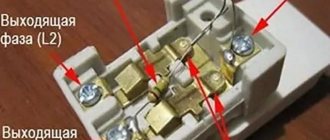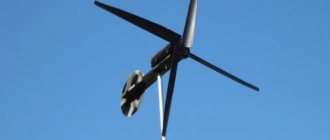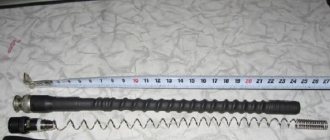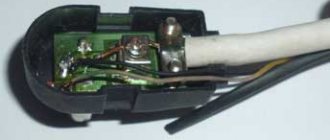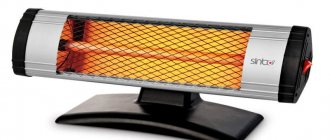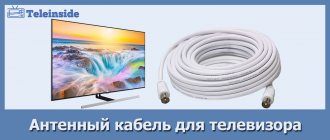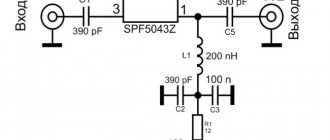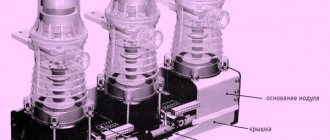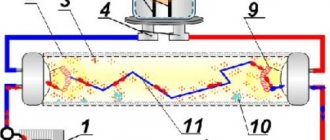Why do you need a signal amplifier?
If the TV does not operate from cable or a satellite dish, it means that it receives the signal using a regular antenna - indoor or outdoor. The transmission process occurs as follows: towers relaying transmissions are installed at a certain distance from each other.
Household receivers - televisions - use an antenna to catch signals and convert them into video accompanied by sound.
A good signal is created in line of sight conditions. If there are obstacles in its path in the form of, for example, reinforced concrete structures, then the quality of image and sound drops sharply
To stabilize and improve the TV signal, an amplifier is used for a home television antenna. Its importance increases where there is no common powerful receiver installed on the roof, that is, outside the city. The device helps to achieve maximum clear images on the screen and purity of sound due to the fact that it reduces interference.
Some antennas cope with signal transmission on their own, without connecting additional devices. Therefore, before purchasing, study the technical characteristics of the antenna and make sure that its capabilities are limited, and it is not possible to configure it to obtain high-quality image and sound without connecting a special device.
Pros and cons of TV signal amplifiers
According to experts, the advantages of using amplifiers are:
- Noise coefficients are negligible;
- Very weak TV signals are being received;
- You can amplify the signal in several ranges simultaneously.
But where there are pros, there are always cons:
- When using a “broadband”, you can overload the required signal level;
- Afraid of thunderstorms;
- The TV signal may be lost;
- Greater sensitivity.
It is important not to forget that this device is not a super-device; it only performs correction functions, helping the TV antenna to “fix” a good signal.
Operating principle of the antenna adapter
TV amplifiers are simple in design and can have different designs. Some consist of a pair of boards on which circuitry is implemented to reduce noise. One of the circuits performs the function of a high-frequency filter, the second is equipped with a capacitor for adjusting frequencies.
To set the required mode, resistors are used. The frequency is adjustable in two ranges: in the first – about 48.5 MHz, in the second – 160 MHz
Thanks to the adjustment, a maximum signal gain of 4.7 dB can be achieved at an operating frequency of 400 MHz.
Some types of amplifiers are designed to be powered from a 12 V source, that is, they can be connected to a car battery. To achieve stability, a stabilizer is used, the circuit of which includes an electrolyte and a diode bridge.
A number of devices are connected using a coaxial cable, but using a choke. They are connected to the TV through a capacitor.
Let's look at the example of one of the transformer amplifier circuits to see how the device works. The module is powered via a signal cable.
The antenna is connected directly to the transformer winding. The amplifying element VT1 is matched to the common emitter. Feedback is provided by elements C1, R3, L1
C1 is a capacitor that connects the feedback section to the power supply and operates at low frequencies. R3 is a resistor that determines the stable operation of the amplifier in various frequency ranges. L1 – inductance that equalizes the frequency amplitude.
Feedback to the flow is organized by circuit C3 , R4 , which together with R1 and R2 enable the cascade mode of operation. C2 is a capacitor that provides connection to the transformer.
The signal from the antenna enters the matching transformer, is then transmitted through a transistor, amplified and stabilized at the emitter. Then frequency correction occurs in the second stage of cascade transistors, after which the signal enters the TV.
If there are several TVs in the house, then a splitter with 3-6 connectors is used to connect the cable and signal amplifier
Thus, thanks to the television amplifier, the sensitivity limited by noise increases, and the loss of the received signal in the coaxial cable is compensated.
The best manufacturers of TV signal amplifiers
- Terra
The company has been known since 1980, when it began supplies to the Russian and Lithuanian markets. It is a manufacturer of high-quality equipment for satellite, cable and terrestrial television. Currently, the company exports products to Europe, Asia, Africa and Australia.
- Eurosky
Chinese manufacturer of broadcast equipment. Satellite receivers of this brand are popular all over the world. Their main feature is great functionality and at the same time low price.
- WISI
German company. Its history began in 1926, when Wilhelm Zin opened his own business in the city of Niefern for the production of semiconductor receivers, plugs and radio components. Since 1935, the company began producing television antennas, and since the 80s of the last century, equipment for CATV. Since 2003, WISI has been the leader on the German market.
- Alcad
A brand with a thirty-year history of success. This is an international company whose headquarters are located in Spain. Alcad has branches in Turkey, the UAE, the Czech Republic, and France. Offices with sales representatives are located in 60 countries. The products are marked with the CE mark.
- REMO
Domestic manufacturer. Saratov Electromechanical Plant was established in 1991. The company's products have repeatedly received the title of diploma winners and laureates in the field of “100 Best Products of Russia”. Today REMO is known not only in Russia, but also abroad. How much does the product cost? Quite affordable for the average buyer.
- RTM
Russian manufacturer. The company was founded in 2001. Its main products are telecommunications equipment for cable television. The company keeps up with the times, new products from RTM are constantly appearing on sale. In particular, this year the model range of connectors and adapters for coaxial cables is being updated.
- Antex
The Ural manufacturer dates back to 2006. Specializes in antenna equipment. Today the company produces antennas of the following standards: GSM900, LTE2600, CDMA450, WIFI, VHF, UHF and many others, as well as equipment for them. The production site is located in Irbit, the main office is in Yekaterinburg.
Before deciding which device is best to buy, you should take a closer look at the products of these companies.
Types of television amplifiers
Devices are divided into categories most often based on two parameters: installation location and frequency range. This applies both to antenna amplifiers specifically and to related analogues - television and satellite.
According to the frequency range, there are three types:
- range;
- multi-band;
- broadband.
A range device amplifies the signal only in a certain, specified frequency range - meter or decimeter. One of its functions is to reduce noise that appears as the cable length increases.
Multi-band devices operate equally efficiently in different frequency ranges and can also receive signals from multiple sources.
The broadband amplifier operates in the meter and decimeter ranges and is used for digital television.
A sample broadband device is model GAL AMP-101. The connection is made through a coaxial cable and a separator. Gain – 20 dB
According to the installation location, all devices are divided into external (mast) and internal. External ones are mounted in the place where the television antenna is installed - on a pole or mast fixed to the balcony or roof. They feature durable protection.
Internal amplifiers are located close to the receiver. Their disadvantage is the losses associated with the cable length.
How to choose the right one
According to buyers, before visiting a specialized retail outlet in order to purchase the desired amplifier, it is worth deciding what models are produced and the scope of their use. Regardless of which popular company released the product, it comes in two types:
| Name | Description |
| Mast | The mounting location is the mast. Power supply is carried out via coaxial cable. They perform their task perfectly. But their service life is short. Thunderstorms, strong winds and rain contribute to accelerated failure. If drops get on the contacts, they quickly oxidize and become unusable. As a rule, this equipment lasts for a couple of years. |
| Interior | The increase factor is acceptable. They are easy to use, as they are located in close proximity to the receiver. However, they cannot boast of signal strength, since it loses its power when passing through the cable. |
In addition to the above gradation, amplifiers are divided into:
- Broadband.
- Multi-band. Able to provide close and far reception. The best-selling products are TERRA and ALCAD. They are able to concentrate several signals from various receiving devices and combine them into one.
- Range. The list includes SWAs and LSAs. Often found in array-type antennas.
All devices are available with separate regulation of different ranges or with an unregulated power supply, which can be either internal or external. Each of them has both pros and cons.
Selection criteria when purchasing
The choice of a signal amplifier for a TV antenna depends both on the technical criteria of the device itself and on external factors, such as the location and installation conditions. However, in the first place are always the characteristics that affect the quality of the signal - this is what additional devices are usually purchased for.
Criterion #1 – operating frequency range
The frequency range connects three devices - the television receiver itself, the antenna and the amplifier. First, select the antenna. It should be remembered here that wide-range ones are inferior to narrow-beam ones, that is, the signal will be weaker.
An antenna amplifier operating in the range 470-862 MHz and having a gain of at least 30 dB. If additional protection from moisture is provided, it can be installed outdoors
If the reception area is not far from the repeater, then you can purchase an “all-wave” unit that covers a wider range. However, a signal from a remote tower will be better received by a device designed for a limited frequency range - for example, HF or UHF.
The amplifier is also selected based on the frequency response of the antenna. If it does not match the range, it will not work.
Criterion #2 – noise figure
The antenna amplifier must adjust the signal-to-noise ratio upward. However, each device receives its own noise during data transmission - and the stronger the signal, the more pronounced it is.
If the noise level is high, only intense noise interference known as “snow” will be visible on TV screens. The image disappears completely, the sound also disappears
It is believed that the noise level should not exceed 3 dB - this is the only way to guarantee good signal transmission quality, but the latest generation devices also have lower values - less than 2 dB.
Criterion #3 – gain
You should not assume that the higher the signal gain, the better the transmission quality. In fact, excessive gain leads to signal distortion, which causes the opposite effect - clipping or overload.
The parameter is measured in dB and has average values:
- decimeter – 30-40 dB;
- meter - 10 dB.
Thus, decimeter ones can cover both 22 and 60 channels, and meter ones can cover no more than 12. If the amplifier increases the coefficient by 15-20 dB, this is considered a good result.
When choosing an amplifier by coefficient, it is necessary to take into account the actual conditions and reception level. Usually they focus on the distance to the tower, that is, the repeater.
An amplifier is usually used if the distance from the repeater to the receiver is at least 9 km. If the tower is located 150 km or further, it is useless to use even a powerful device - this is the maximum for which household models are designed
To avoid getting into trouble, you can choose a device with the ability to adjust and make additional adjustments. There are many universal models, and they are designed for different distances.
If the tower is in direct line of sight, an amplifier is not needed.
Criterion #4 – active or passive
If we consider the principle of operation of the device, then we need to take into account the division into active and passive. The passive one operates in autonomous mode, while the active one requires additional power from the mains. Most often, the device is connected via an adapter - a 9 V or 12 V adapter.
The closer the active device is installed to the TV, the better the signal will be. A long cable increases the risk of interference that cannot be eliminated by adjustment.
If the device is located outdoors, it is necessary to provide protection from moisture and precipitation. Sometimes the following option is implemented: the antenna with an amplifier is installed outside, and the adapter is left inside the room.
But it is better to follow the manufacturer's instructions, which usually warns of interference if installed incorrectly.
Equipment Needs
The main task: to minimize cable losses. If the antenna itself does not have enough strength to catch the moving flow, then the microcircuit will not help. The need for a receiver arises if there is a sufficiently large distance between the device and the TV. The abilities will be fully revealed if there is a distance of 30 meters or more. Whatever the cable, the signal weakens as it passes through. You can also purchase a device when reception is from a weak repeater.
Options when there is no need to purchase a product:
- The incoming signal will have a power several times greater than the required value.
- In addition to television channels, the receiver picks up extraneous noise.
- Critical level of reception.
Before proceeding with installation, you must consider the following nuances:
- Availability of power supply. The product is sold simultaneously with the power supply. But there are also exceptions. There is no need if a voltage of 5 V is required. Then you can borrow electricity directly from the tuner. The current flow will be of high quality, there will be no ripple. However, many models require 12 V.
- There is a possibility of burnout when struck by lightning. To reduce the possibility of a negative outcome, lightning protection or grounding is done.
- Time passes and the power supply begins to deteriorate. In this case, the quality of the received signal decreases.
- It becomes possible to enhance the reception of a third-party signal, thereby reducing the quality of the TV channel.
Review of popular models
Some amplifiers are in demand due to their simple design, low cost and easy installation. If necessary, the devices can be installed, replaced or repaired yourself.
Image gallery
Photo from
EUROSKY SWA-555
Planar 21-69FT
Locus LA-21
Terra 126
When purchasing devices for external use, take care of their tightness. It has been noted that external devices have to be replaced approximately once every 2 years, despite their protection, so if it is possible to install the amplifier under the roof, take advantage of it.
TV antenna amplifier - what is it?
If you look at it, a TV antenna amplifier is not a very complicated device. This is a simple microcircuit designed for a power supply of six to twelve volts. Sometimes it doesn't even need an internet connection. Question: what causes the signal to be amplified? We will understand this without using complex terms and definitions.
The signal enters the transformer from the antenna and is then sent to the transistor. In a transistor, the TV signal is amplified, and only slightly. Then its path lies through the emitter. Then, using cascade transistors, the frequency is adjusted. This is a simple description of a complex thing at first glance. After this, the signal is sent to the TV.
Making an antenna that doesn't need amplifiers
We must warn you right away - if the distance to the TV tower is more than 15 kilometers or there are a large number of obstacles in the path of the signal, then you cannot do without an amplifying device. If there are no problems described above, then the antenna can be made in about 10 minutes.
Step-by-step algorithm:
- The first thing you need to do is find out what channel the signal is broadcast on in the region. Open the link www.rtsr.ru and go to the RTRS web page. Then we indicate our current location.
- Scroll down and find the phone number by which the user can find out the broadcast channel.
- We enter the channel data in the appropriate field that will appear when the TV is switched to manual tuning mode. The frequency that will be needed to calculate the cable length will be displayed below.
- Then we take a calculator. To calculate, we use the following formula: 7500 divided by the frequency in MHz. We always round the result up.
- For example. Frequency in the Samara region is 754 MHz. Divide 7500 by 754 and get 9.9. This means that the cable length must be 10 centimeters.
- Initially, there is no need to shorten the cable. We install a simple television connector on it, which is connected through a coupling to the cable.
- Next we take measurements. We retreat 20 mm from the plug. There will be a bend at this point. This is where you should measure the required length. In our case it will be 12 cm (2+10=12). Next, the cable is cut at the outermost mark.
- Then remove the insulating layer from the 20 mm mark. to end. This is very easy - modern cables have a very soft outer layer.
- Afterwards we remove the shielding layer. We don't need him at all.
- At the 20 mm mark. The cable is bent at an angle of thirty degrees. After this, the antenna is ready for use.
- We position the antenna so that it is directed towards the TV tower. There is no need to hang it outside the room. In the room the signal, although lower, will be quite sufficient for normal reception.
To summarize all of the above. Without an amplifying device, you can make a TV antenna yourself. In this case, such an antenna will function at the level of the factory analogue.
Signal amplification without additional devices
It is possible to amplify TV antenna signals even when using a short piece of coaxial cable. A receiver will still be required if the television receiver is of an old generation.
Often, most houses have community antennas installed that do not function well. For such a case, there is one life hack.

